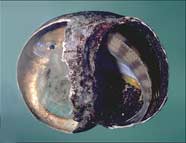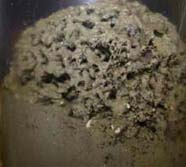| |
Glossary of Coral Reef Terminology - X
X linkage - in genetics, the inheritance pattern of genes found on the X chromosome but not on the Y |
X-organ - groups of neurosecretory cells in the eyestalks of crustaceans that secrete a molt-inhibiting hormone |
xantho- - a prefix meaning yellow |

A yellow tang, Zebrasoma flavescens. (Photo: Jim McVey, NOAA)
|
xanthochromic - yellow or golden color |
xanthophore - a chromatophore which produces yellow pigments in the form of carotenoids |
xenobiotic - a chemical which is not a natural component of the organism exposed to it; a chemical or other stressor that does not occur naturally in the environment. Xenobiotics occur as a result of anthropogenic activities such as the application of pesticides and the discharge of industrial chemicals to the environment; a synthetic chemical believed to be resistant to environmental degradation. A branch of biotechnology called 'bioremediation' seeks to develop biological methods to degrade such compounds |

A xenoecic cichlid fish occupying the shell of a mollusk. (Photo: M.K. Oliver, Ph.D./ Cichlid fishes of lake Malawi, Africa)
|
xenoecic - pertains to an organism that inhabits the empty living space or shell of another organism |
xenology - homology that arises via lateral gene transfer between unrelated species (e.g., by retroviruses) |
xenoparasite - an organism not usually parasitic on the host but that becomes so because of a weakened condition of the host |

A xenophyophore photographed on the Blake Ridge. They construct complex, golf-ball-sized tests from sand and sediment grains. (NOAA photo)
|
xenophyophore - a giant protozoan protist (Syringammina fragilissima), up to 25 cm in diameter, that inhabits deep-sea habitats. Large aggregations of xenophyophores appear on the Darwin Mounds |
xenotransplantation - transplantation of tissue from one species to another species |
xeric - arid; characterized by dry conditions; requiring only a small amount of moisture |
xiphoid - sword-shaped; also called "xiphiform" |
xylem - tissue in vascular plants that carries water and nutrients from the roots to the shoot and leaves. The xylem contains tracheids, vessels, fiber cells and parenchyma. It also provides structural support |
|
|
|
|

